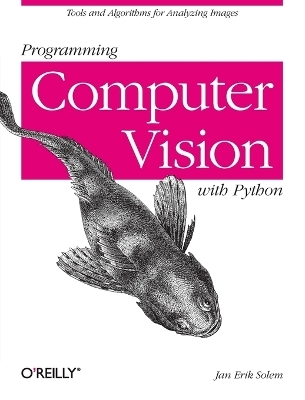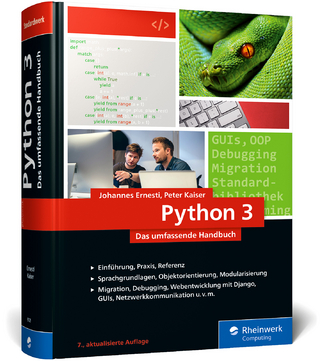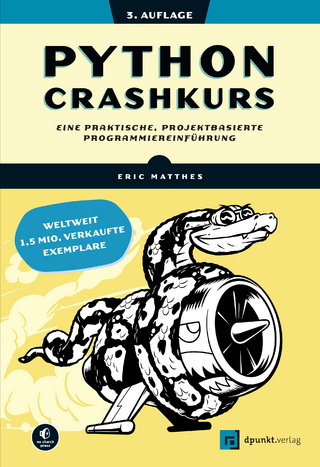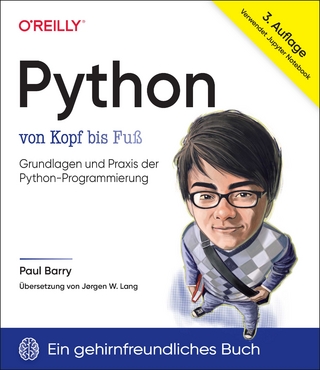
Programming Computer Vision with Python
Seiten
2012
O'Reilly Media, Inc, USA (Verlag)
978-1-4493-1654-9 (ISBN)
O'Reilly Media, Inc, USA (Verlag)
978-1-4493-1654-9 (ISBN)
If you want a basic understanding of computer vision's underlying theory and algorithms, this hands-on introduction is the ideal place to start. As a student, researcher, hacker, or enthusiast, you'll learn as you follow examples written in Python - the easy-to-learn language that has modules for handling images and mathematical computing and data mining on a par with commercial alternatives. Programming Computer Vision with Python teaches computer vision in broad terms that won't bog you down in theory. Instead, you'll find this book to be inspiring and motivating. You'll get all the code you need, with clear explanations on how to reproduce the book's examples and build upon them directly.
If you want a basic understanding of computer vision’s underlying theory and algorithms, this hands-on introduction is the ideal place to start. You’ll learn techniques for object recognition, 3D reconstruction, stereo imaging, augmented reality, and other computer vision applications as you follow clear examples written in Python.
Programming Computer Vision with Python explains computer vision in broad terms that won’t bog you down in theory. You get complete code samples with explanations on how to reproduce and build upon each example, along with exercises to help you apply what you’ve learned. This book is ideal for students, researchers, and enthusiasts with basic programming and standard mathematical skills.
If you want a basic understanding of computer vision’s underlying theory and algorithms, this hands-on introduction is the ideal place to start. You’ll learn techniques for object recognition, 3D reconstruction, stereo imaging, augmented reality, and other computer vision applications as you follow clear examples written in Python.
Programming Computer Vision with Python explains computer vision in broad terms that won’t bog you down in theory. You get complete code samples with explanations on how to reproduce and build upon each example, along with exercises to help you apply what you’ve learned. This book is ideal for students, researchers, and enthusiasts with basic programming and standard mathematical skills.
- Learn techniques used in robot navigation, medical image analysis, and other computer vision applications
- Work with image mappings and transforms, such as texture warping and panorama creation
- Compute 3D reconstructions from several images of the same scene
- Organize images based on similarity or content, using clustering methods
- Build efficient image retrieval techniques to search for images based on visual content
- Use algorithms to classify image content and recognize objects
- Access the popular OpenCV library through a Python interface
Jan Erik Solem is a Python enthusiast and a computer vision researcher and entrepreneur. He is an applied mathematician and has worked as associate professor, startup CTO, and now also book author. He sometimes writes about computer vision and Python on his blog www.janeriksolem.net. He has used Python for computer vision in teaching, research and industrial applications for many years. He currently lives in San Francisco.
Chapter 1 Basic Image Handling and Processing
- 1.1 PIL—The Python Imaging Library
- 1.2 Matplotlib
- 1.3 NumPy
- 1.4 SciPy
- 1.5 Advanced Example: Image De-Noising
- Exercises
- Conventions for the Code Examples
- 2.1 Harris Corner Detector
- 2.2 SIFT—Scale-Invariant Feature Transform
- 2.3 Matching Geotagged Images
- Exercises
- 3.1 Homographies
- 3.2 Warping Images
- 3.3 Creating Panoramas
- Exercises
- 4.1 The Pin-Hole Camera Model
- 4.2 Camera Calibration
- 4.3 Pose Estimation from Planes and Markers
- 4.4 Augmented Reality
- Exercises
- 5.1 Epipolar Geometry
- 5.2 Computing with Cameras and 3D Structure
- 5.3 Multiple View Reconstruction
- 5.4 Stereo Images
- Exercises
- 7.1 Content-Based Image Retrieval
- 7.2 Visual Words
- 7.3 Indexing Images
- 7.4 Searching the Database for Images
- 7.5 Ranking Results Using Geometry
- 7.6 Building Demos and Web Applications
- Exercises
- 8.1 K-Nearest Neighbors
- 8.2 Bayes Classifier
- 8.3 Support Vector Machines
- 8.4 Optical Character Recognition
- Exercises
- 9.1 Graph Cuts
- 9.2 Segmentation Using Clustering
- 9.3 Variational Methods
- Exercises
- 10.1 The OpenCV Python Interface
- 10.2 OpenCV Basics
- 10.3 Processing Video
- 10.4 Tracking
- 10.5 More Examples
- Exercises
- A.1 NumPy and SciPy
- A.2 Matplotlib
- A.3 PIL
- A.4 LibSVM
- A.5 OpenCV
- A.6 VLFeat
- A.7 PyGame
- A.8 PyOpenGL
- A.9 Pydot
- A.10 Python-graph
- A.11 Simplejson
- A.12 PySQLite
- A.13 CherryPy
- B.1 Flickr
- B.2 Panoramio
- B.3 Oxford Visual Geometry Group
- B.4 University of Kentucky Recognition Benchmark Images
- B.5 Other
- C.1 Images from Flickr
- C.2 Other Images
- C.3 Illustrations
Appendix References
Appendix About the Author
Colophon
"...eine hervorragende Lektüre für Praktiker, die nach den Prinzipien des Rapid Application Development (RAD) schnell Ergebnisse bei geringem Entwicklungsaufwand erzielen möchten." - Linux Magazin, 12/2012
| Erscheint lt. Verlag | 24.7.2012 |
|---|---|
| Zusatzinfo | illustrations |
| Verlagsort | Sebastopol |
| Sprache | englisch |
| Maße | 191 x 235 mm |
| Gewicht | 431 g |
| Themenwelt | Informatik ► Programmiersprachen / -werkzeuge ► Python |
| Informatik ► Theorie / Studium ► Künstliche Intelligenz / Robotik | |
| Mathematik / Informatik ► Informatik ► Web / Internet | |
| ISBN-10 | 1-4493-1654-9 / 1449316549 |
| ISBN-13 | 978-1-4493-1654-9 / 9781449316549 |
| Zustand | Neuware |
| Haben Sie eine Frage zum Produkt? |
Mehr entdecken
aus dem Bereich
aus dem Bereich
eine praktische, projektbasierte Programmiereinführung
Buch | Softcover (2023)
dpunkt (Verlag)
32,90 €
Grundlagen und Praxis der Python-Programmierung
Buch | Softcover (2024)
O'Reilly (Verlag)
49,90 €


